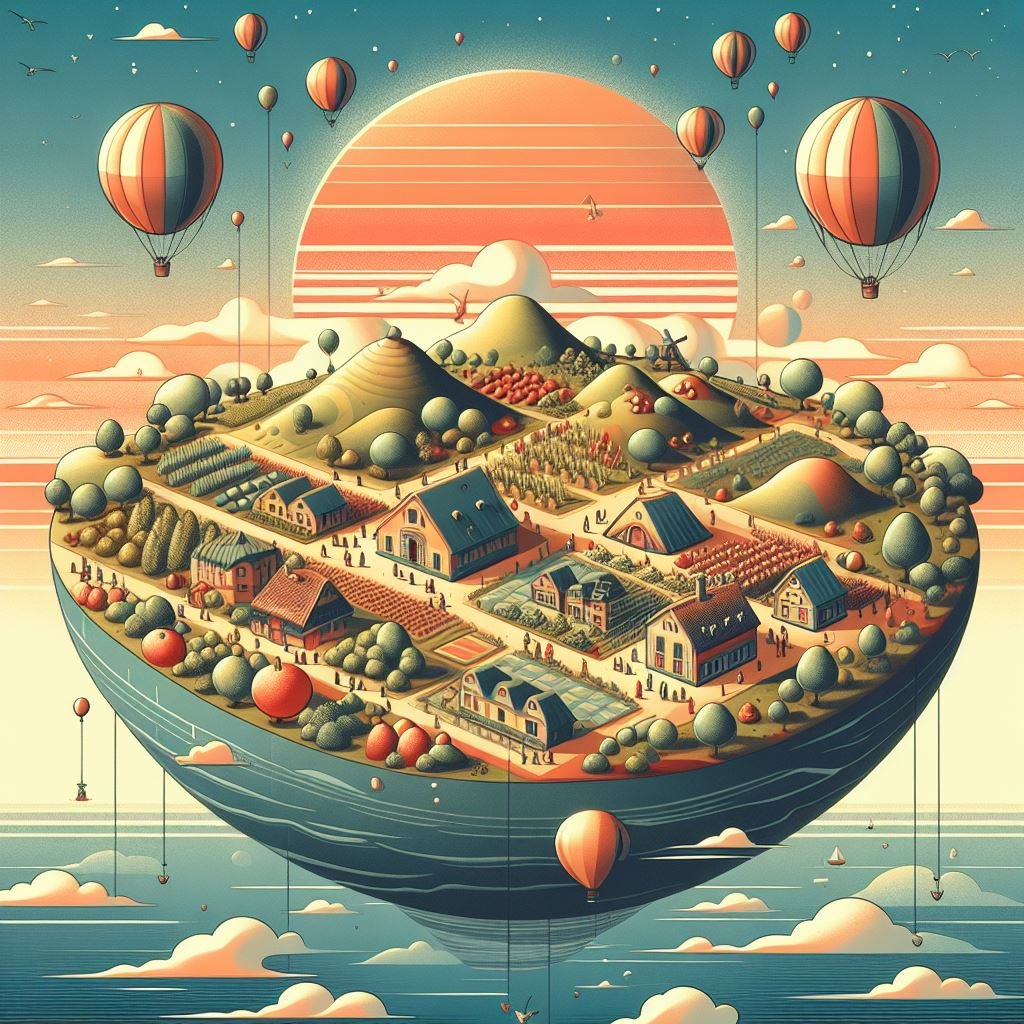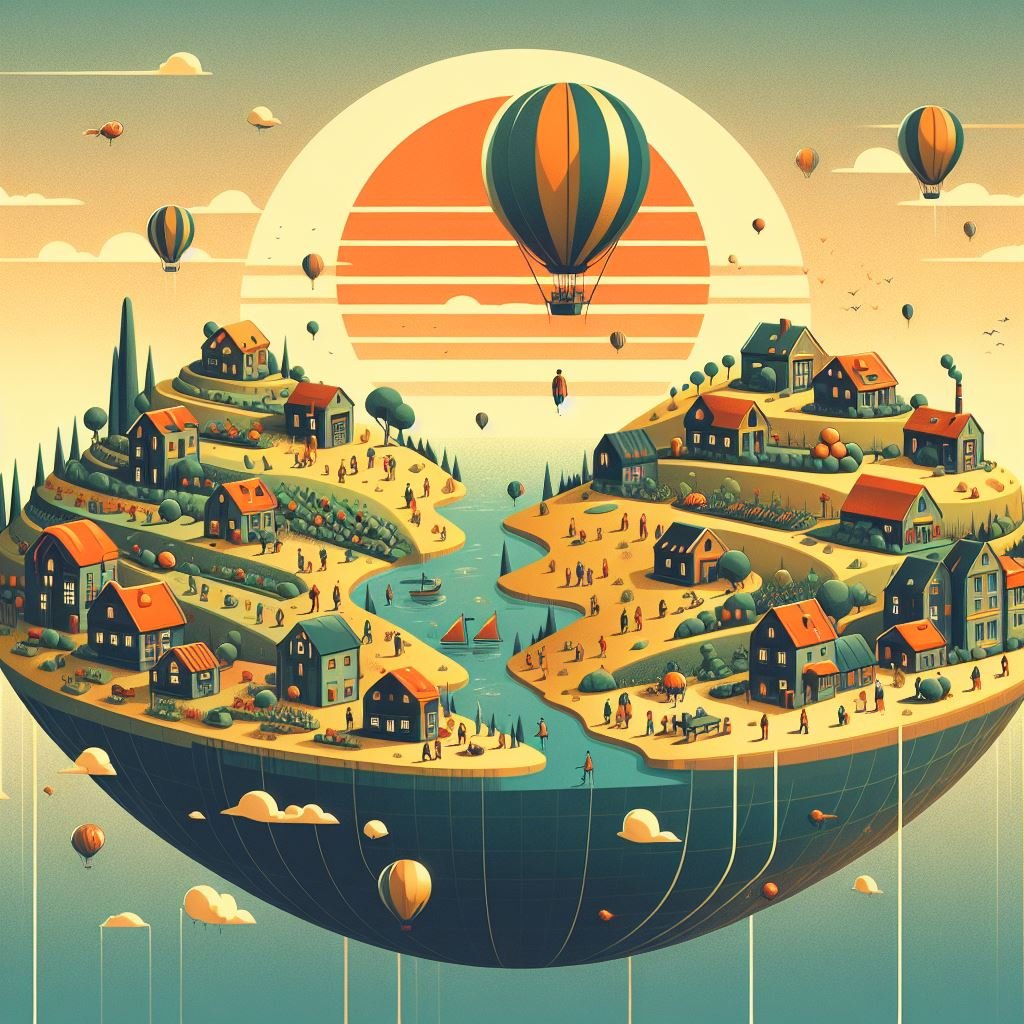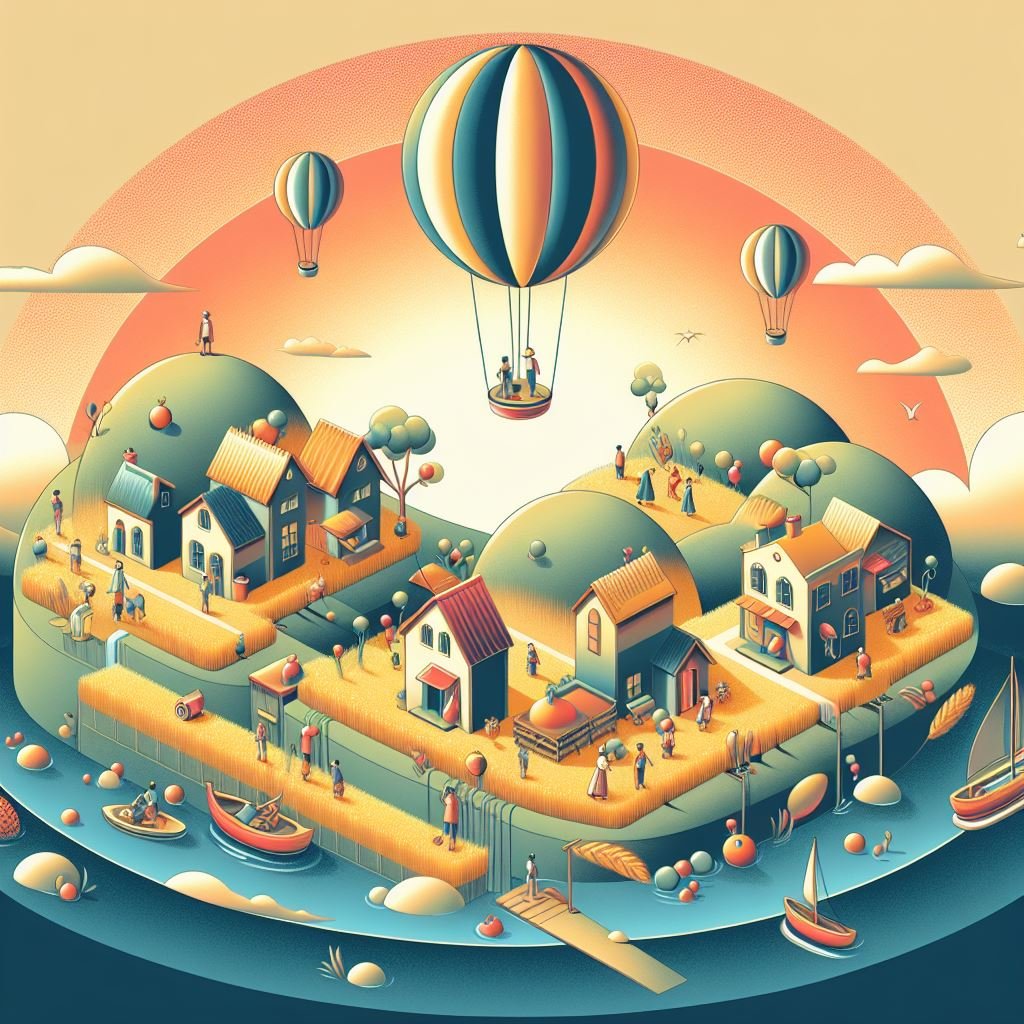Imagine the world
4 comments
People in ancient Mesopotamia saw the world as a flat, circular shield surrounded by vast open spaces. Above this shield was the sky, and the entire universe was believed to have arisen from the encompassing ocean that existed above, below, and around this shield.
In their beliefs, the sky was the home of the gods, and below it was the Earth, and further below the surface were the fresh waters of Apsu. At the bottom was the underworld where the dead lived.
In turn, from Hindu mythology comes the idea that the Earth is supported by elephants standing on a turtle. In Hindu belief, the world is held up by four (or in some versions seven) giant elephants that stand on the back of a huge cosmic turtle named Kurma. This image of the world has its roots in ancient cosmology, where these animals symbolize stability and power. Kurma, the turtle, is also one of the incarnations of the god Vishnu.
In ancient China, the Earth was imagined as square and the sky as round, which was part of the concept of cosmic harmony.
Each of these visions is full of symbolism and reflects specific cultural beliefs and values. It's truly fascinating how different cultures over the centuries have imagined the structure of the universe. Each person has their own unique way of perceiving reality, based on their own experiences, culture and beliefs. The fact that we can create our own worlds, especially with the help of technology and AI, shows how powerful our imagination and creativity are. This is my idea...




Ludzie w starożytnej Mezopotamii widzieli świat jako płaską, okrągłą tarczę otoczoną przez ogromne, otwarte przestrzenie. Powyżej tej tarczy znajdowało się niebo, a uważano, że cały wszechświat powstał z ogarniającego oceanu, który istniał nad, pod i wokół tej tarczy.
W ich wierzeniach, niebo było domem bogów, a pod nim znajdowała się Ziemia, a dalej pod powierzchnią znajdowały się świeże wody Apsu. Na dole znajdował się świat podziemny, gdzie mieszkali umarli.
Z kolei z mitologii hinduistycznej pochodzi idea, że Ziemia jest podtrzymywana przez słonie stojące na żółwiu. W wierzeniach hinduistycznych, świat jest podtrzymywany przez cztery (lub w niektórych wersjach siedem) gigantyczne słonie, które stoją na grzbiecie ogromnego kosmicznego żółwia o imieniu Kurma. Ten obrazek świata ma swoje korzenie w starożytnej kosmologii, gdzie zwierzęta te symbolizują stabilność i moc. Kurma, żółw, jest również jednym z wcieleń boga Wisznu.
W starożytnych Chinach wyobrażano sobie Ziemię jako kwadratową, a niebo jako okrągłe, co było częścią koncepcji kosmicznej harmonii.
Każda z tych wizji jest pełna symboliki i odzwierciedla specyficzne przekonania i wartości kulturowe. To naprawdę fascynujące, jak różne kultury na przestrzeni wieków wyobrażały sobie strukturę wszechświata. Każda osoba ma swój unikalny sposób postrzegania rzeczywistości, bazujący na własnych doświadczeniach, kulturze i przekonaniach. To, że możemy tworzyć swoje własne światy, zwłaszcza z pomocą technologii i AI, pokazuje, jak potężna jest nasza wyobraźnia i kreatywność. Takie jest moje wyobrażenie …
Comments